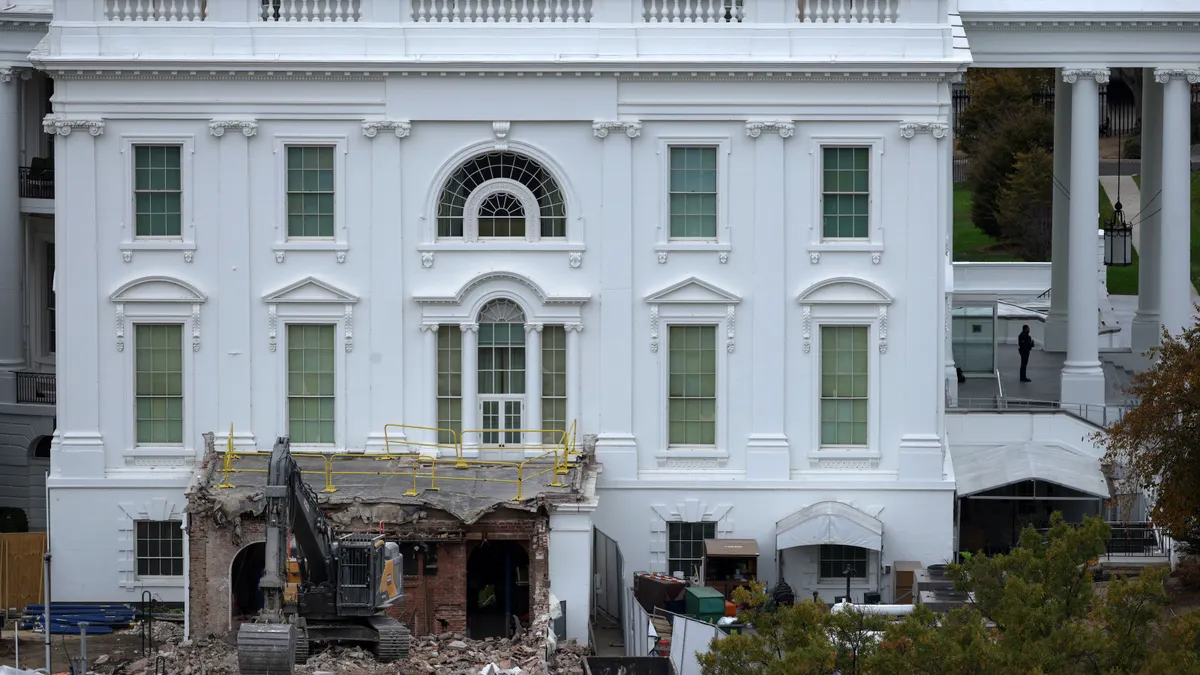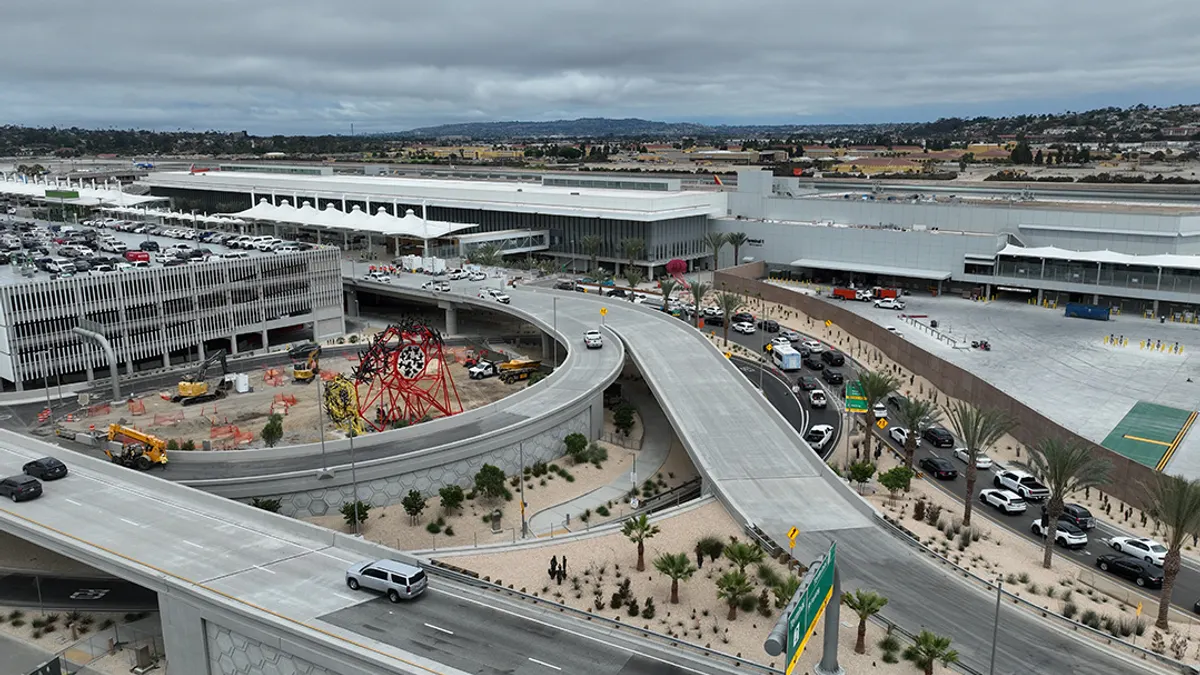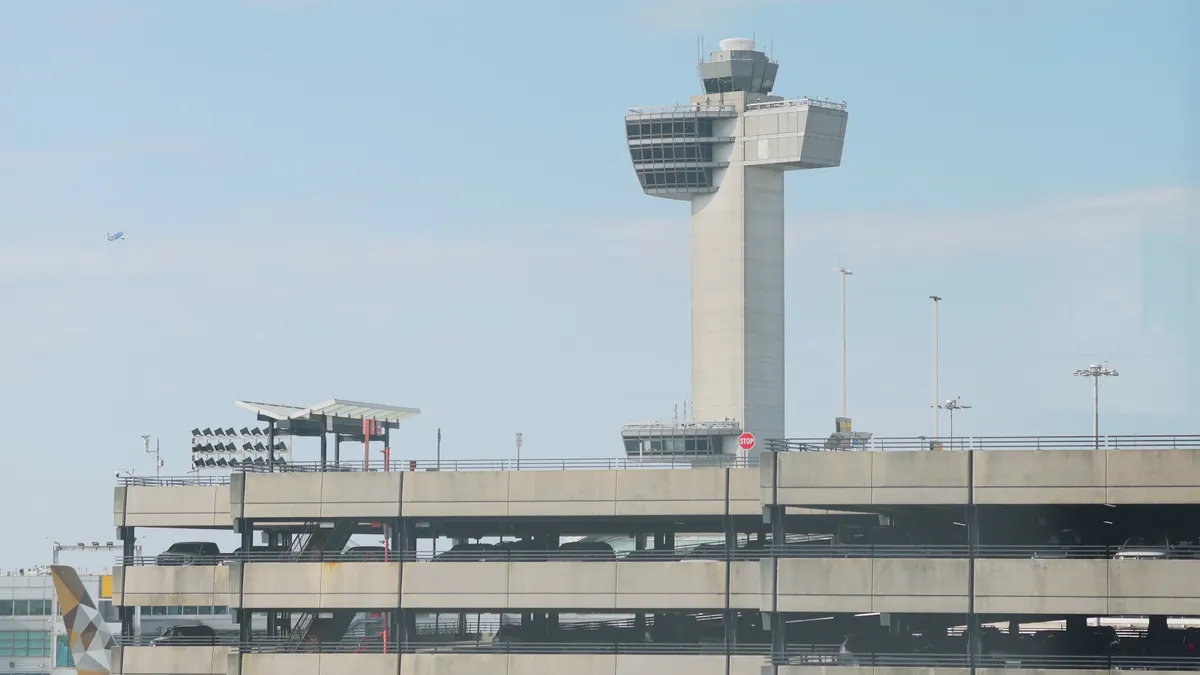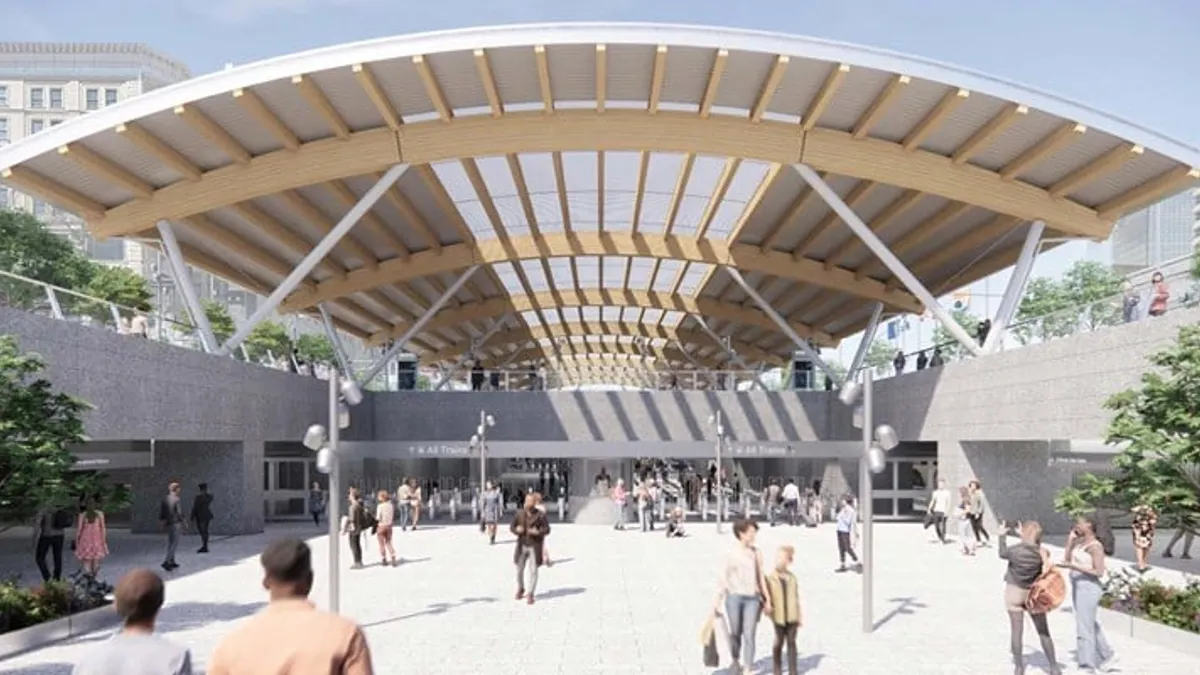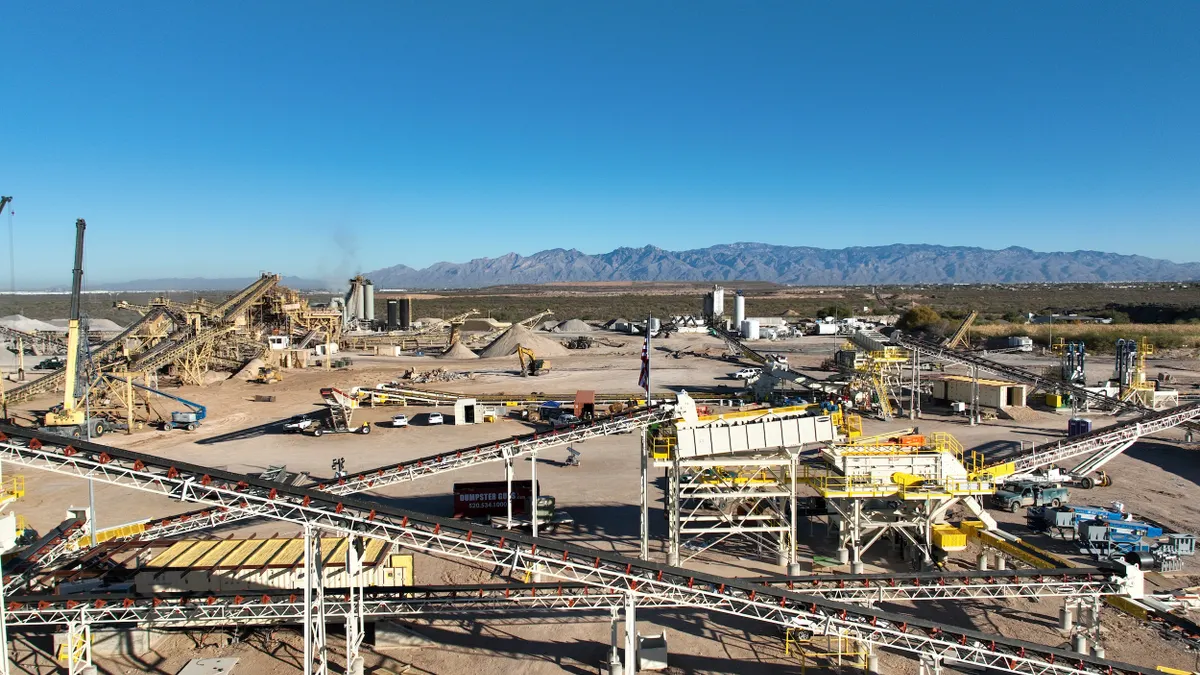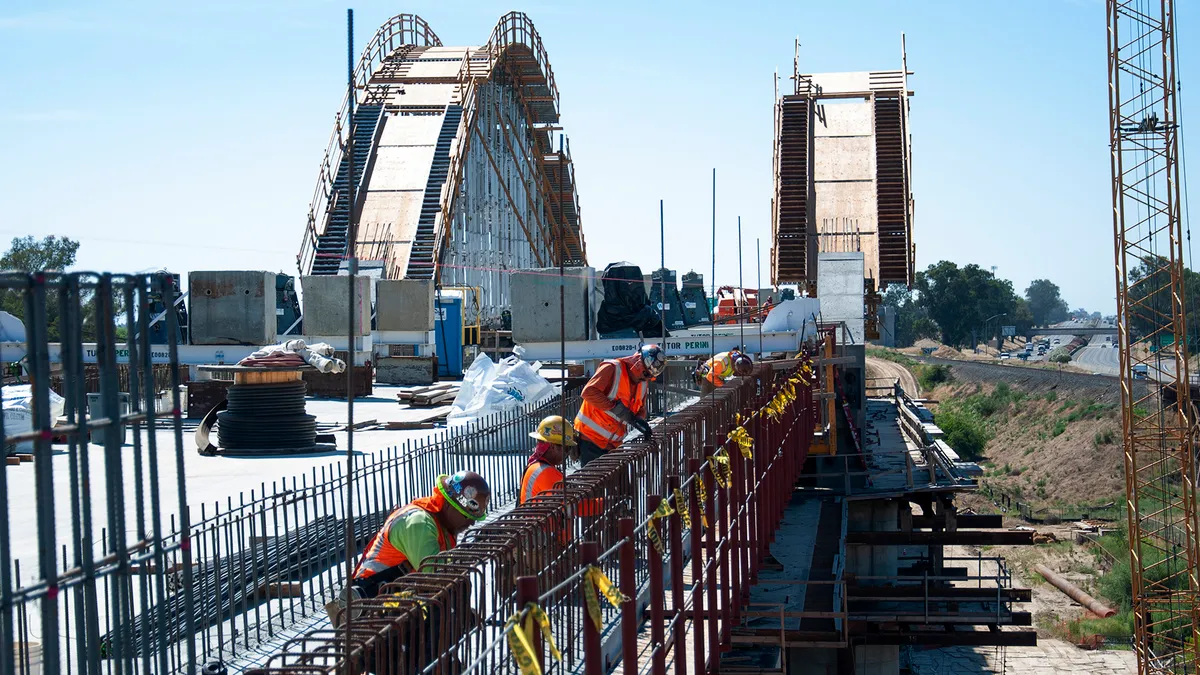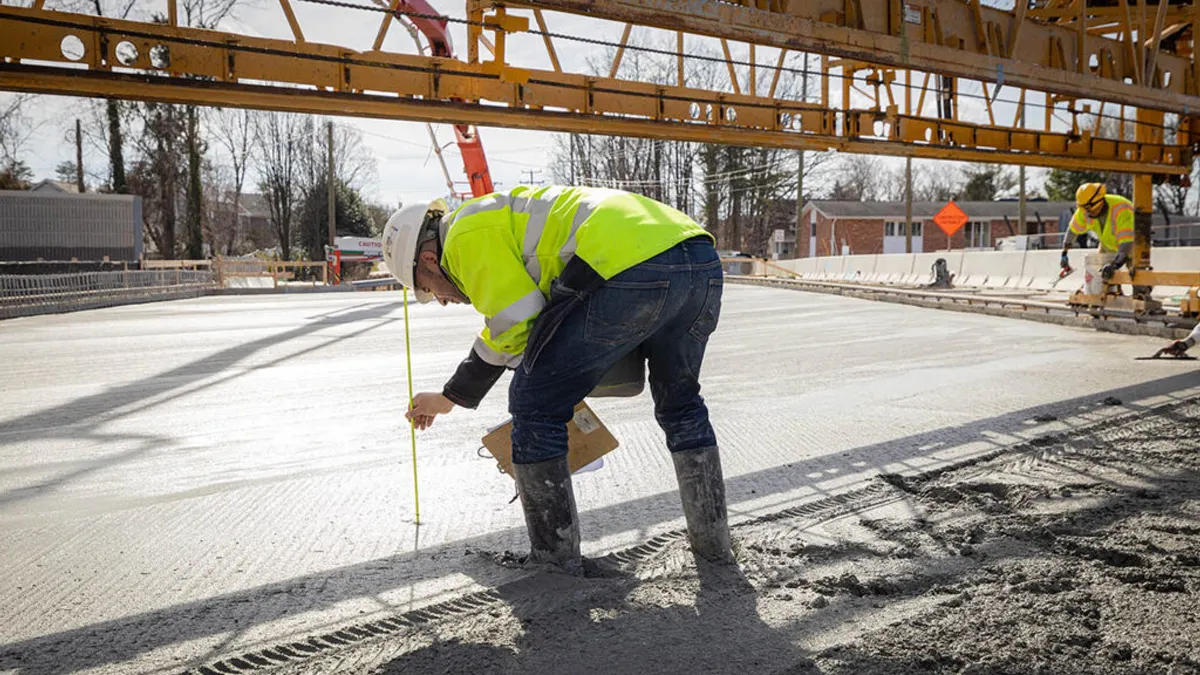The Federal Highway Administration is on a mission to improve efficiency on infrastructure projects, and the private sector is playing a key role in those efforts.
Led by current Administrator Gregory Nadeau and former Administrator Victor Mendez, the FHWA launched the Every Day Counts initiative in 2010. The program aims to "figure out how to get projects off the shelf and delivered within the timeframes," Nadeau told Construction Dive. Although EDC focuses on publicly funded projects, the private sector has entered the game, as private companies "ultimately deliver the projects," Nadeau said. "Contractors, engineering companies and consultants needed to be part of that conversation."
Every two years, the FHWA fields nearly 100 suggestions for tactics to improve construction efficiency from state transportation departments, private sector groups, and other industry stakeholders. The agency whittles down the list to around a dozen initiatives, which typically fall under technological or process innovations, according to Nadeau. Although technological advancements have already revolutionized building practices, a significant portion of the public and private sectors has a long way to go in adoption of these new innovations.
The FHWA is currently working on its fourth round of suggestions after deploying 32 initiatives in the first three rounds — ranging from design-build, to 3-D engineered models, to e-construction. After the FHWA selects the initiatives for the cycle, states then have the choice to implement those changes to their construction processes with the help of the FHWA.
We spoke with Nadeau to find out more about the Every Day Counts initiative, the broader focus on improved efficiency in construction, and his experience working with the nation's "original innovators."
Editor's note: This interview has been edited and condensed for clarity.
CONSTRUCTION DIVE: How do you choose which EDC initiative suggestions become priorities?
NADEAU: A number of criteria. For example, we really can’t promote specific products that have a commercial interest. We would promote technologies, but not products. Warm-mix asphalt is a good example. We try not to deploy too many initiatives that would occupy the same kind of sector of our workforce. We wouldn’t do 12 safety initiatives because our safety has other responsibility. We try to balance the total number of initiatives and spread them out so that we have the capacity throughout our organization to provide the necessary support for the initiatives throughout the cycle.
We always try to address accelerated bridge construction, that’s kind of a staple. We’re always looking for innovations that will address safety, which is of course the top priority for us and all of our state and local partners. Accelerating project delivery, efficiency in project delivery, is kind of the core of EDC. We’re always looking for initiatives that address the efficiency of project delivery in one way, shape or form ... Oftentimes they’re innovations that were really pioneered or practiced in individual states. They’re really the laboratories for a lot of this. A lot of what we do is work with the states to accelerate the analysis of the benefits and the information associated with the innovation. It’s just a question of getting that information out to more practitioners faster on a wider basis. Often it’s just proven technologies or proven practices that are just under-utilized, and we just get them out there faster and widespread.
How do the states choose which initiatives to implement?
NADEAU: We produce a menu, the way I look at it, and states and local agencies look at the menu and decide what they’re ready for. And in some places, states may have already deployed that particular initiative. It’s really a menu to help contribute to their efficiency. Once they select a particular initiative, then we provide support systems to help advance the deployment of it. We have a division office in every state, and they help.
When the states choose which initiatives to use, are the private contractors expected to use the same techniques that the state DOTs decide to use?
NADEAU: (The owners have) to essentially adapt their systems, obtain the necessary software, provide the necessary training to their staffs in order for the private sector to utilize e-construction systems. It requires the owner to have certain capabilities to enable the contractor community to use that practice or that technology. States are now in the process of learning about it and evaluating what they would need to acquire to utilize it.
Michigan and Florida, for example, have done some analysis. They’ve been at this for a while. They’re kind of pioneers in this (e-construction) area. They estimated they save approximately $40,000 per project per year. The federal highway aid program nationally, we have about 112,000 projects going at any one time. It gives you a bit of a sense of scale. Not every project would utilize this and realize those savings, but on average, if you look at the scale of $100 billion program every year, $40,000 a project adds up quickly. There’s indirect savings in process efficiencies, and direct savings in things like printing paper, handling, mailing, and all that sort of thing. When you look at hundreds of agencies, tens of thousands of projects, if you get the entire network, the entire system, using this technology, you’re gonna have massive aggregate efficiencies as a result.
In your experience, has the industry on both the state DOT side and private sector been open to innovation? Or has it been hard to get them to change?
NADEAU: Bridge engineers are generally considered conservative. My view on that is the last thing I want is a cavalier bridge engineer. I think what you have is an engineering culture that is, I like to say they’re all from Missouri, the "Show Me State." Once the engineering community is convinced and they’re willing to put their stamp on it, get out of their way. Look at the history of the country. From the Hoover Dam to the Tappan Zee Bridge, engineers are the original innovators. It’s a function of in this much more complex world, getting to the point where everyone’s confident that the innovation has proven itself. Once it has, then I’m absolutely of the opinion that state DOTs and other trans station agencies are very open to innovation ... I think our commitment to engaging the private sector in this process from the very beginning was a big reason for our success.
In past cycles of EDC, one of the suggested methods was design-build vs. design-bid-build. Do you think that is becoming a more efficient way of delivering projects? And what is your position on public-private partnerships?
NADEAU: Public-private partnerships have clearly been utilized more frequently in this country. There’s some great examples of success. Design-build, construction manager/general contractor, (and other) innovative contracting methods provide the ability to get the contractor involved. Either in a design-build where you’re shifting a lot of risk and a lot of flexibility and a lot of authority to the contractor, or CM/GC is a method where you’re getting contractors involved in the process much earlier — to be involved in the design process — so that you improve constructability. So you usually get projects done faster and often at less cost.
(Design-build methods) were also part of Every Day Counts in the early round and we’ve been working with states for several years now on expanding their use, and they have expanded substantially. The design-bid-build method is still for the basic boilerplate project. It’s still by far the contract method that is in widespread use in the federal aid highway program. But for more complex, complicated projects, you’re seeing design-build and CM/GC used much more commonly. I think it’s very positive because we’re seeing the results of projects delivered more quickly and saving money. Getting projects done more quickly is essential as demand on the highway system grows and becomes more congested. Project delivery efficiency, it’s now a staple in how we do business, and it’s going to be something we’re never going to be satisfied. I think for our industry, our owners, the states, and certainly the Federal Highway Administration, this is going to be an ongoing commitment and priority, and I think we’re just going to get better and better at it.



